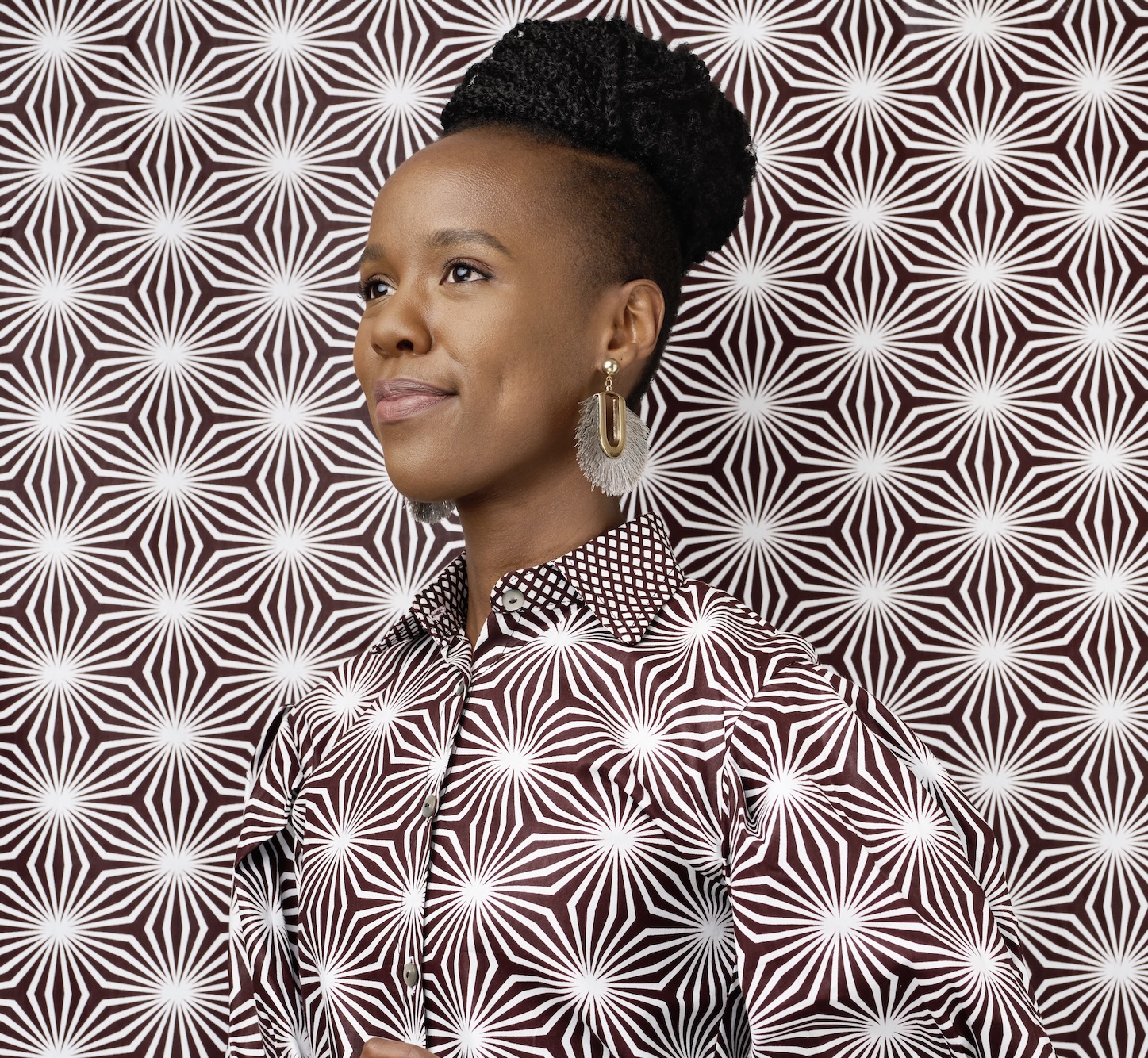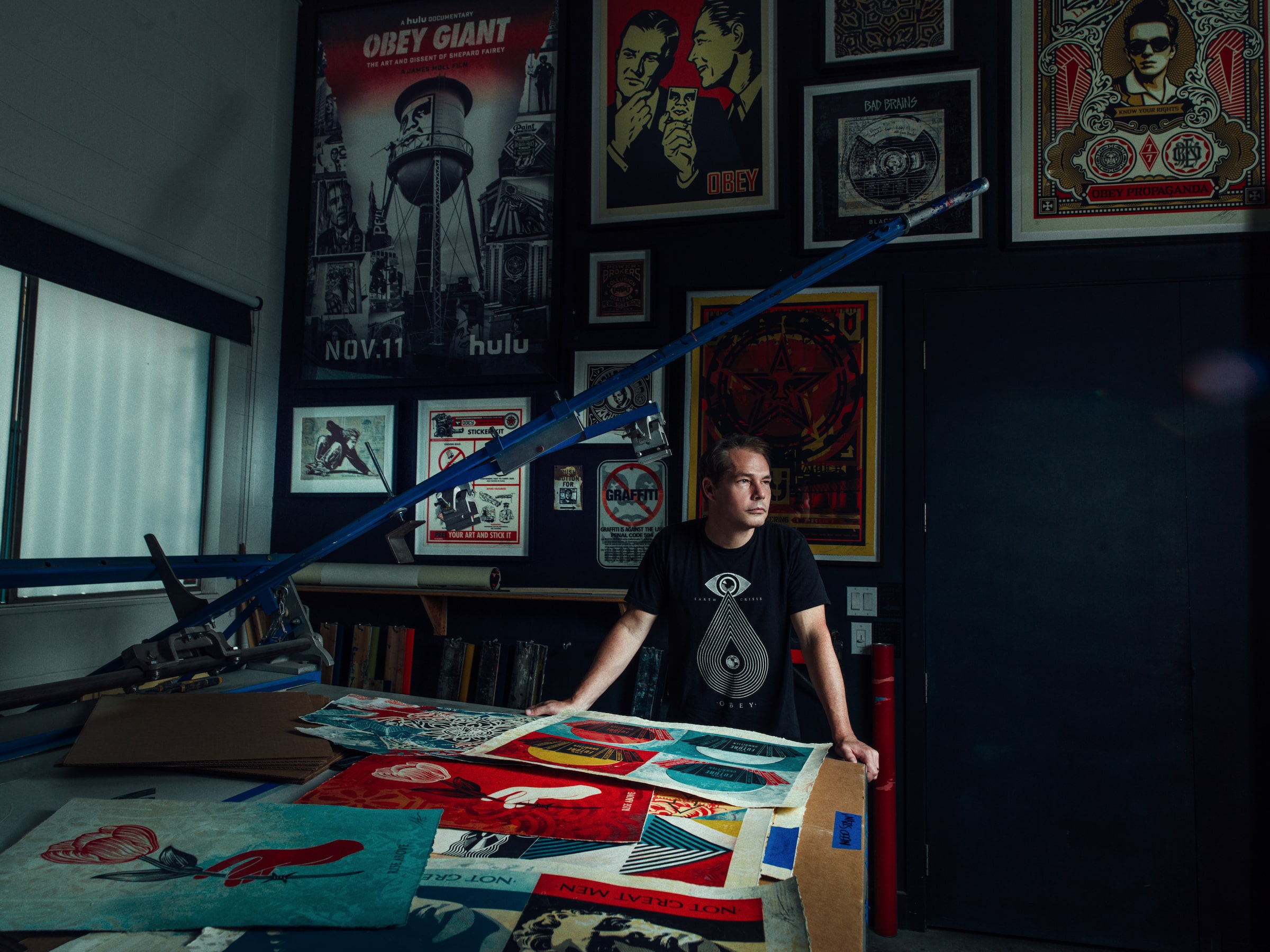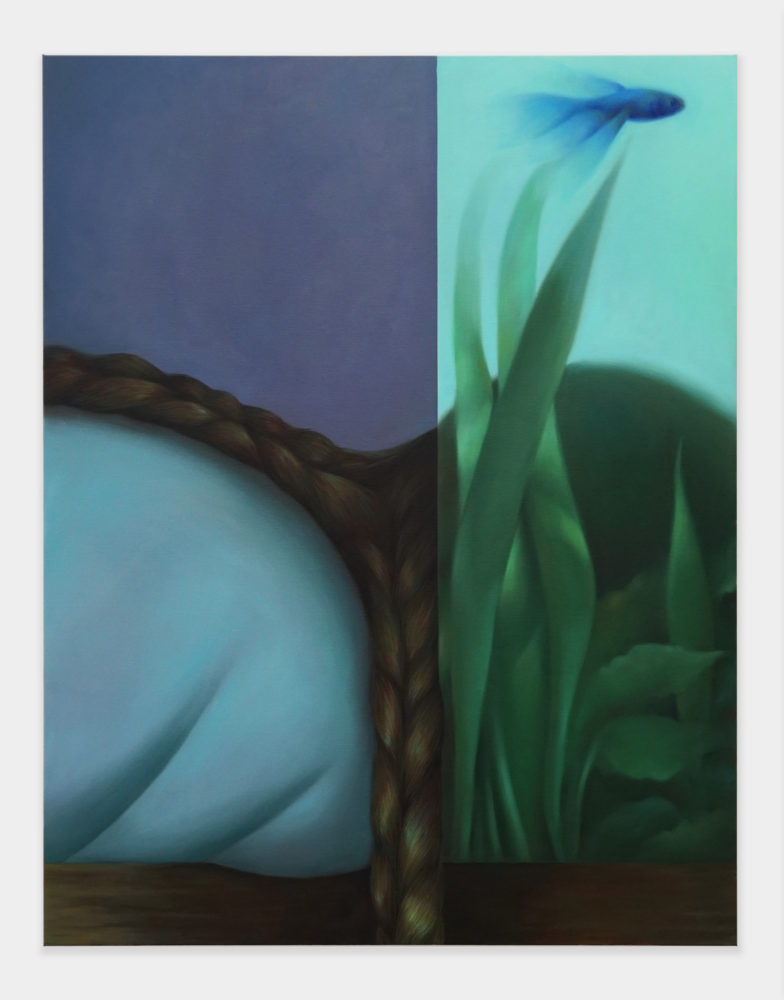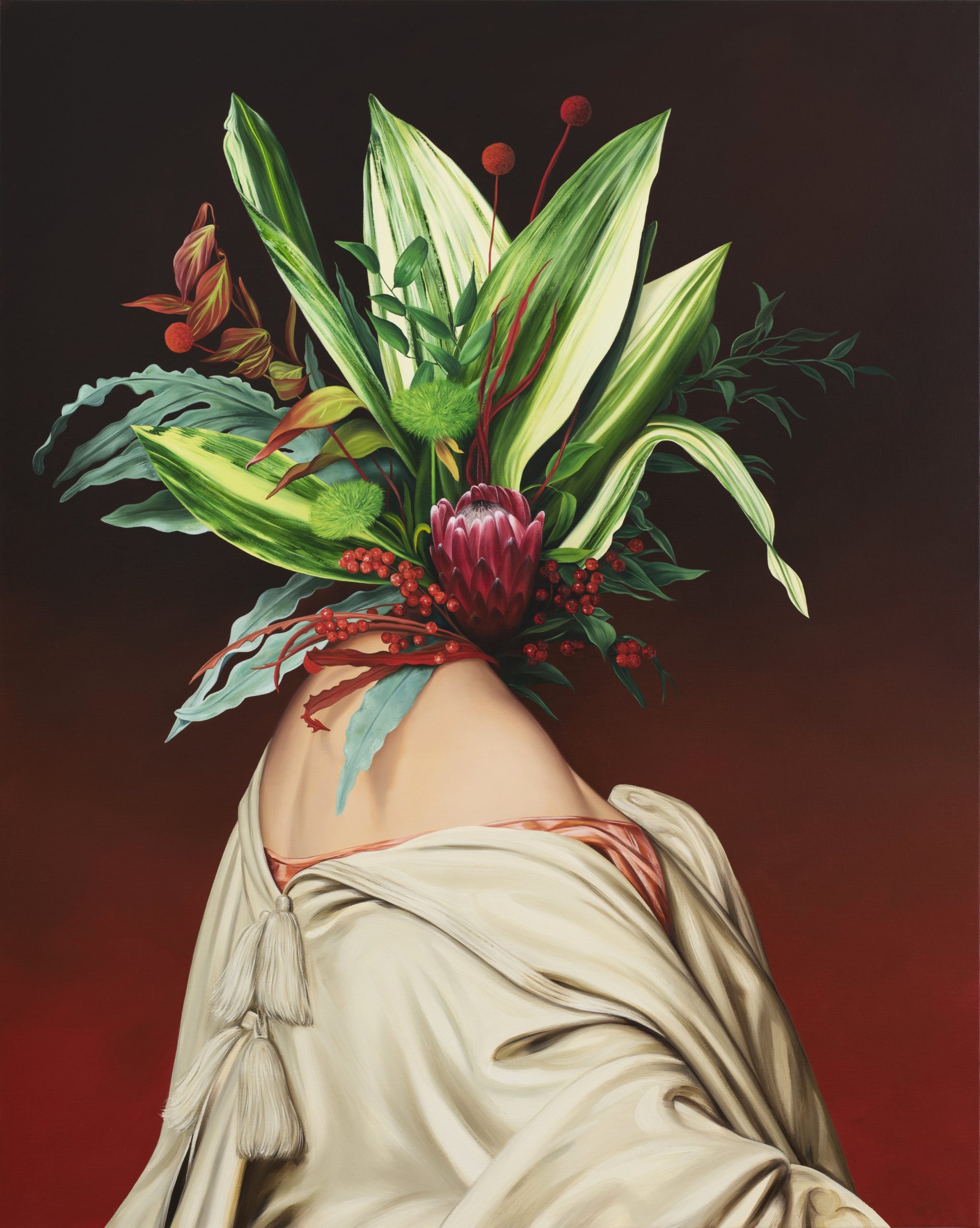The 31-year-old photographer Thandiwe Muriu has spent over half her life cultivating a recognizable aesthetic. Wielding her first Nikon camera at the young age of 14, she spent her teenage years capturing her sisters at home in creative scenarios, which garnered attention from the local community for subsequent commissioned work. At 18, in advance of attending college, she was then signed to a talent agency and began shooting global advertising campaigns.
In 2015, Muriu started her ongoing series “Camo” with a suite of six images that featured models completely styled by her. The women were dressed in the same fabrics as their backgrounds, punctuated by expressive hairstyles and found objects made into accessories. During the height of the COVID-19 pandemic, “Camo” caught the attention of 193 Gallery in Paris, which included her work in a group show soon after. She has since signed with the gallery and presented work around the world at fairs like SCOPE Miami Beach, Photo London, and 1-54 Contemporary African Art Fair.
Muriu met Whitewall at her solo show, “Colors of Thandiwe” (July 7–September 4, 2022) at Galerie Kitsuné in Brooklyn, to share how her work encapsulates her vibrant Kenyan culture and history, while reflecting a contemporary viewpoint on family, beauty, and joy.
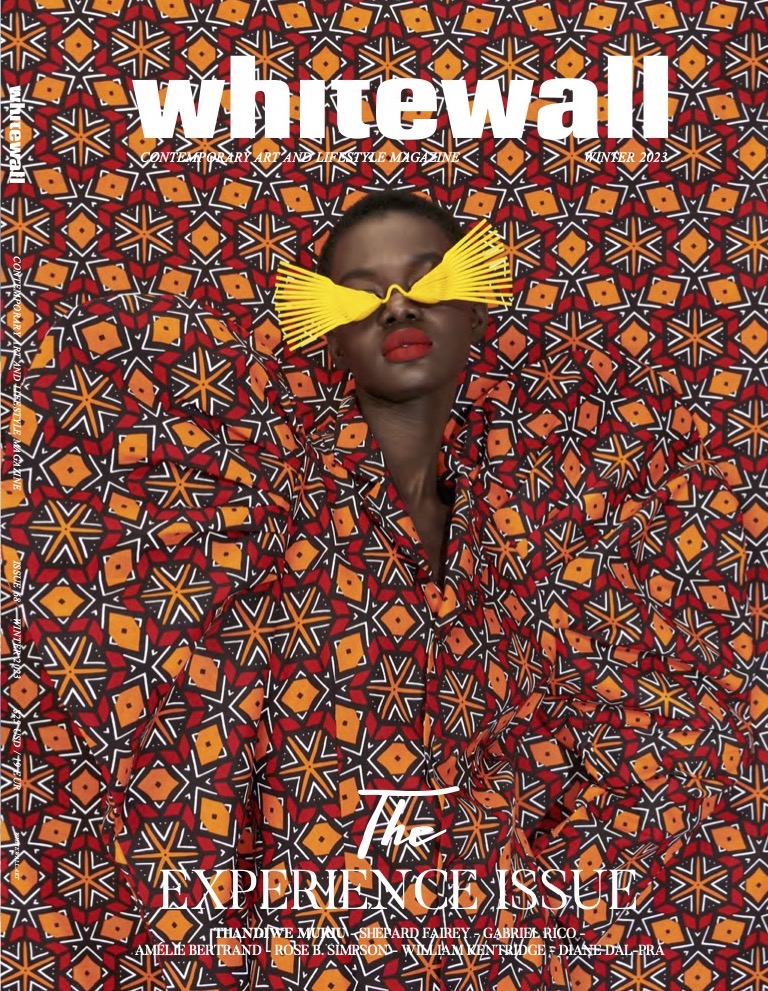
Thandiwe Muriu, “Camo 48,” © Thandiwe Muriu.
WHITEWALL: Let’s go back to 2020, when at the height of the pandemic you were signed to 193 Gallery. What was that time in isolation like for you?
THANDIWE MURIU: The pandemic was good for me in a bad way. I had put all my bets on being a photographer. I thought, “This has to work.” But I was so busy I did not have time to stop and think about what I wanted to say or do. The pandemic forced me to stop and rest. I needed it. I realized that I create from rest. It wasn’t that work completely stopped in Kenya; it was that it became one of the major points of the advertising world, so I would get a lot of work from huge companies and agencies. But I was so busy I couldn’t hear myself. Because of the pandemic, a lot was locked down. Crews were smaller; we were shooting remotely. Things went on, in general, but I had time to rest and to stop and ask myself, “Am I enjoying what I am doing? Is this what I want to do for the rest of my life?” But the first year I didn’t even ask those questions. I got COVID at some point, and my reaction was, “Thank god no one is going to ask me to come to work.”
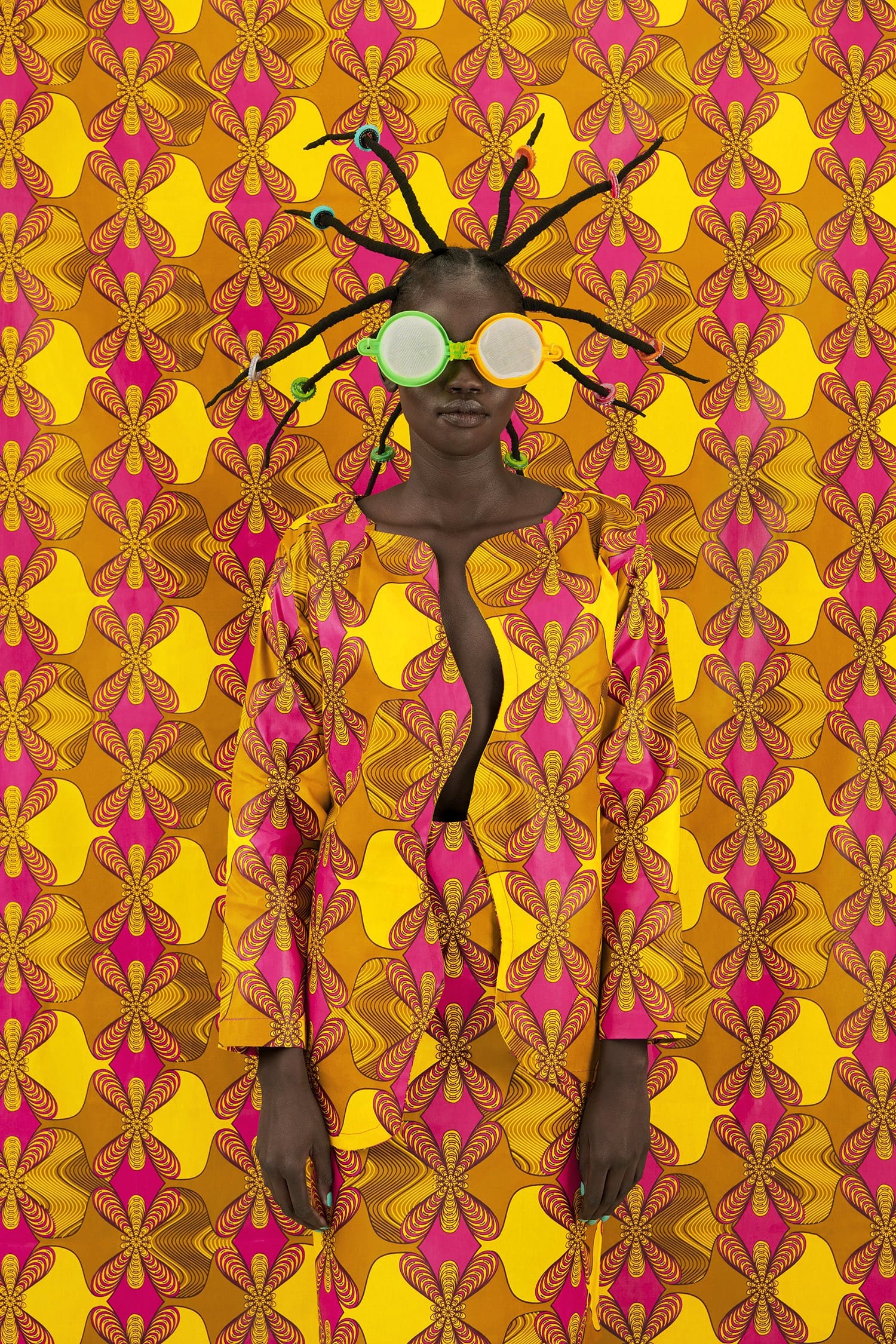
Thandiwe Muriu, “Camo 15,” © Thandiwe Muriu.
WW: When you were able to rest, what did that clarity give you?
TM: It gave me courage. I was so tired that I couldn’t hear myself. The pandemic showed me that I love what I am doing, but am I dreaming big enough? Am I satisfied with the direction all my energy is taking? I thought, “I am not being brave enough.” This opened up, and I thought, “Okay, I will follow the easiest path. Is this the right path? Can I always go back to commercial advertising?” But I had to be brave. I was going to try it and it might not work, but I will not regret having tried it. I will regret ten years from now not trying it.
WW: You mentioned you’re still shooting commercials, but you’re taking a different approach. What is that like?
TM: I still do commercials because it’s a piece of me that I love. But there’s a new approach to them, rather than just executing someone else’s vision. Even if it is not my aesthetic, sometimes they come to me and ask, “This is our concept. How can we Africanize it?” This is a space I love being in. I can speak to not the cliché but what is exciting—how we can explore the African identity together. I am all about identity and what can we say. What is a new way of saying what we have always been saying? That empowers.
WW: For your images, you design the clothing, brainstorm the hair and makeup, and even create the accessories, but your local community is still involved. How so?
TM: It is a collaboration. I created this project to express myself, so I want the creatives I work with to express themselves in the work, too. The most exciting part is asking them to make things that are not their everyday. The tailors are excited to create something a little wild, and so are the hairdressers. I don’t want something perfect on my models. Instead, I say
I want her hair to stand up straight with zigzag lines and ask if they can make that happen. Everybody lights up! It’s been great to see that it is creatively fulfilling for everyone.
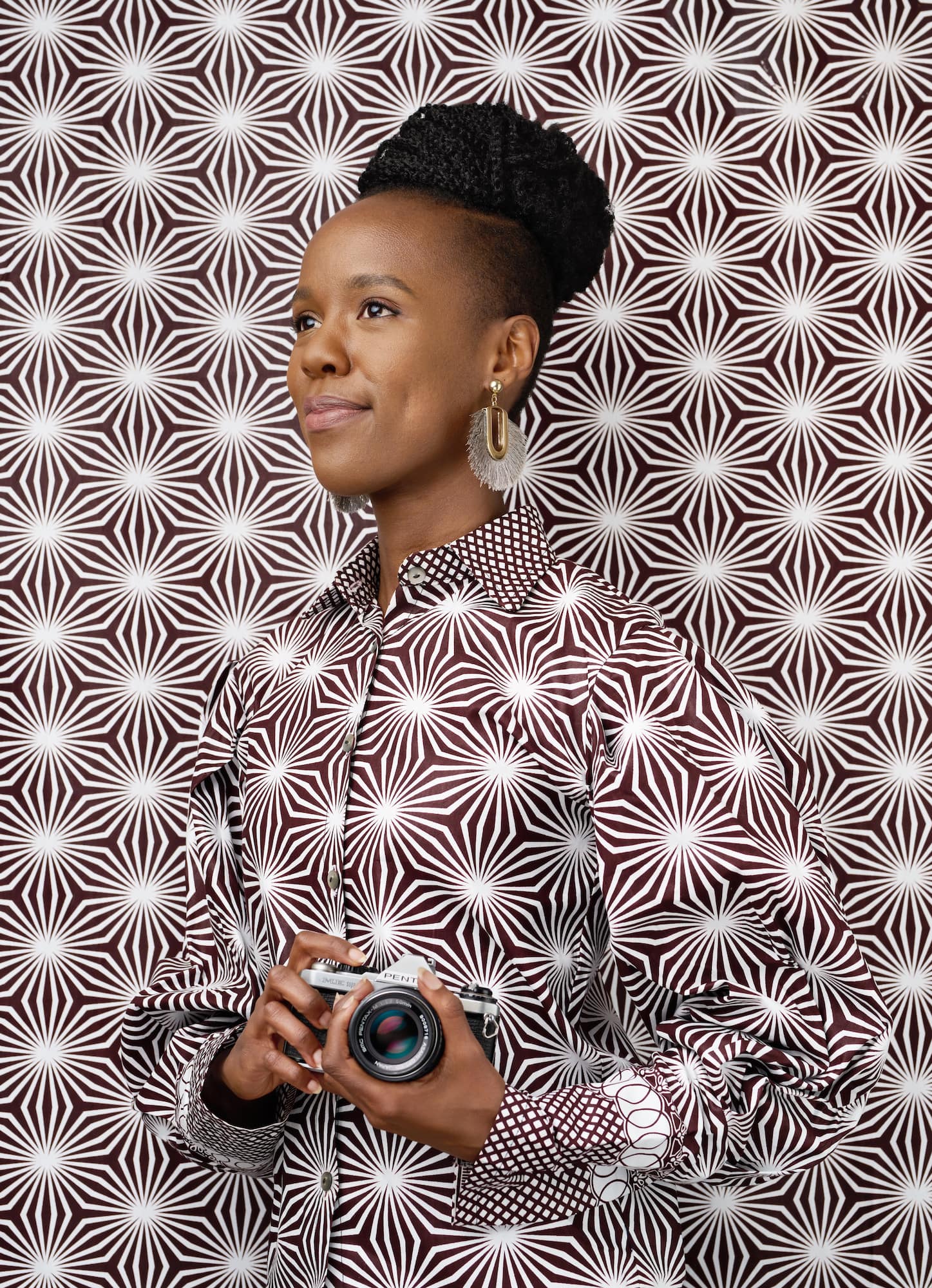
Portrait courtesy of Thandiwe Muriu.
WW: You mentioned the starting point is always the fabric. How do you find the material?
TM: It’s very messy. Wherever I see something amazing, I’m like, “Stop the car! We’re getting out!” The prints are not a guaranteed thing. If I see a print in one part of Kenya, it’s everything’s different in another part. You may never see the print again if you don’t get it that day. Prints are also fashion, so it’s an archive of what’s in fashion in 2022. The prints I got three or four years ago, you’ll never find them on the market again.
I need prints that are electric—something that confuses the eye. Because I’m looking for specific prints, I source them from around Africa. I go anywhere. Thank god for the Internet because I ship them from Nigeria, Ghana, South Africa . . . Wherever there is fabric, I will look.
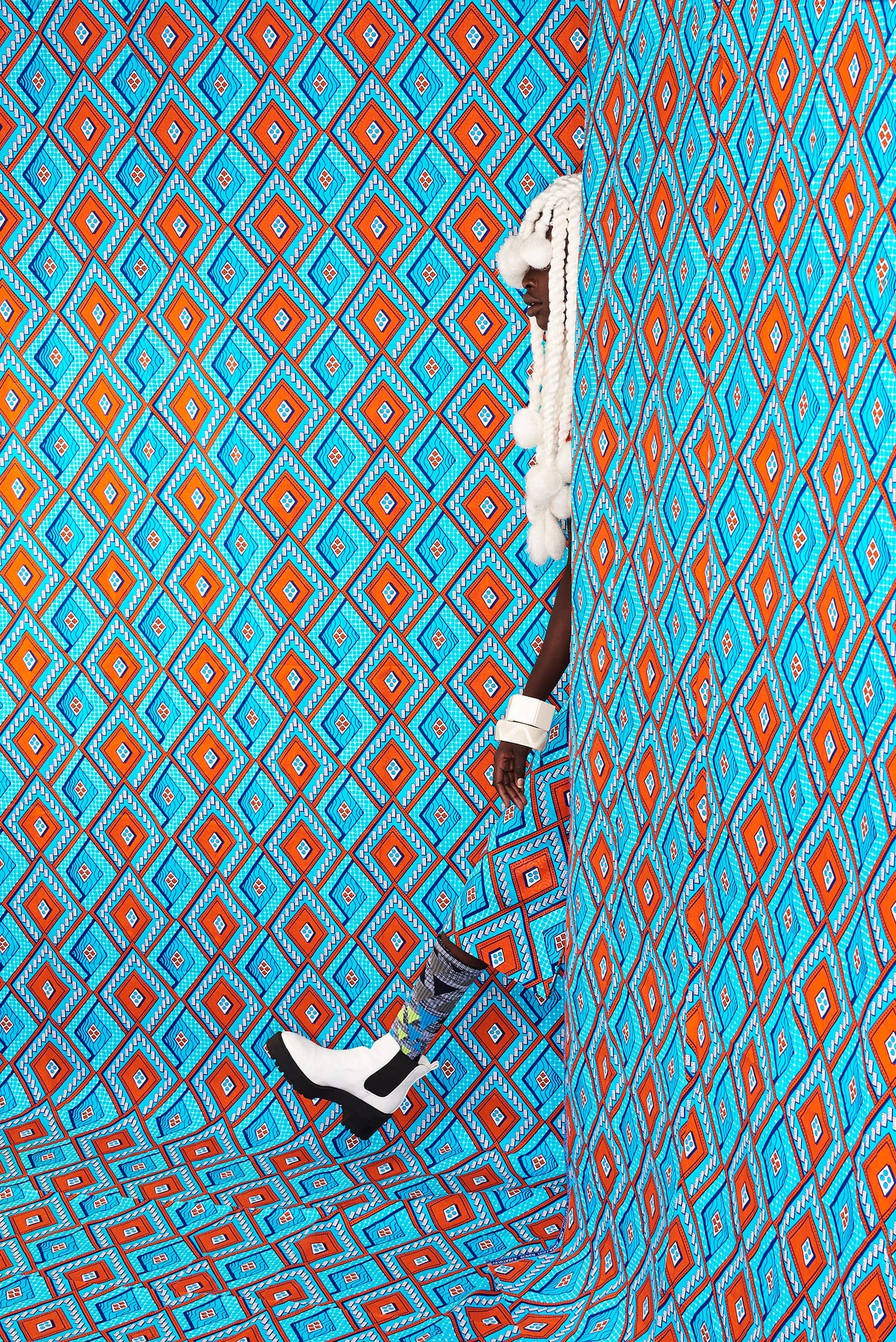
Thandiwe Muriu, “Camo 2.0,” © Thandiwe Muriu.
WW: The accessories in your work are created by found objects typically seen at home, like sink strainers, straws, and bottle caps. Why are everyday objects important in your practice?
TM: I struggle with the narrative of my culture—that we’re just poverty, the starving children you see on TV, people that only need aid. There is a place for that, but we are more than that. I thought, “How do I address that in my work?” I’ve always wanted to make happy art.
These accessories became a fun and quirky way to celebrate Kenyan culture, because there is so much lack. Our government doesn’t really offer us a lot of systems; you’re kind of on your own. People become resourceful. It’s a celebration of this. So “Camo” had a rule that it must be something that can be found in the home—across any socioeconomic status. Something we all have.
WW: Camo 36 features a model in a traditional African head wrap, which you stated your mother wears every day. How do the women in your family influence your work?
TM: Half of my work has bits of my mother in it, because I think that mothers are our first references of beauty. They teach us what beauty looks like, how to care for yourself.
Creating this work has also allowed me conversations with my grandmother, asking questions about who we are. There are elements of my culture that are not for me, but there are elements that I’ve taken in and understood the reasoning behind them. Now that I do, I understand my culture a little bit better. It is exciting to live in Kenya because now I can explore my culture in a way that before I didn’t want to.
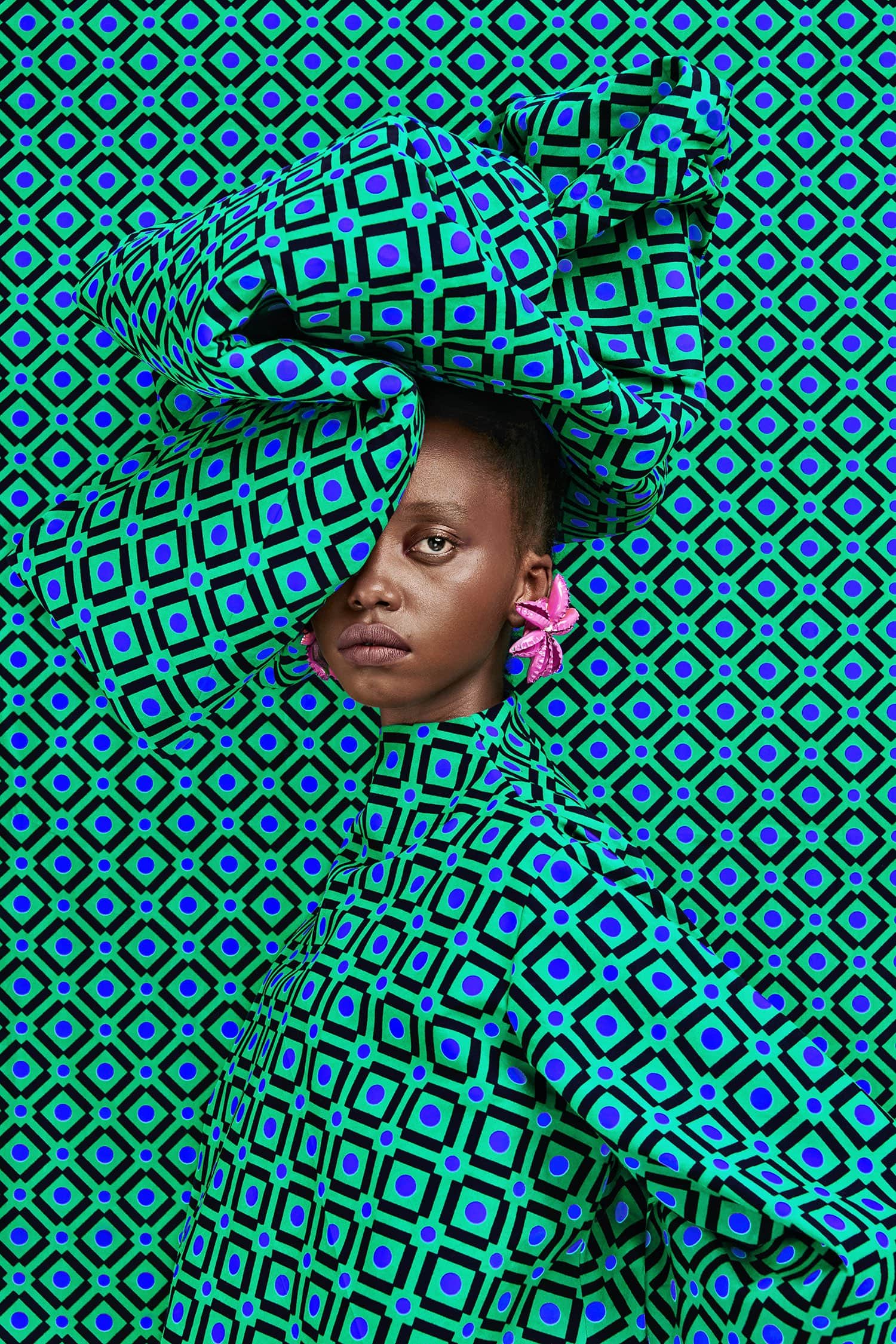
Thandiwe Muriu, “Camo 36,” © Thandiwe Muriu.
WW: Your images are accompanied by African proverbs. How did these come to be included in your practice?
TM: I was representing my culture in one dimension, showing it through textiles and images. I thought, “Is my culture more than just visual? Is there another way I can communicate the beauty of it? The wisdom?” It’s a very oral culture. We are storytellers. I asked, “Am I representing my culture well if I’m not using words?” Now, I pair the piece with a proverb that describes different elements of the work. Some of them are direct and literal in reference, but some talk more about the energy it gives me.
Proverbs are a great way of preserving the oral culture that we have, and for future generations. I am part of the modern Africa generation. I would never read African proverbs just for my own information. I thought, “This is something that we are going to lose!” If I pair it with my images, five years from now, people will learn about African proverbs and Kenyan culture. I’m preserving history.
WW: In addition to being the photographer, you’re curating, styling, and directing the shoot. How do you describe your role?
TM: I think of myself as a photographer because I speak through images. Everything else is a necessity to create what I’m seeing in my head in my camera. My role is to be true to my experience and messaging. I want to share my life, my world, and the questions I am asking myself with others, so that maybe together we can find the answer.
It’s been amazing to see how my work transcends culture. I’m asking questions about beauty, like, “Am I beautiful? What makes me beautiful?” Every woman asks herself those questions. I want you to go on the journey with me as we ask ourselves those deep, intimate questions.
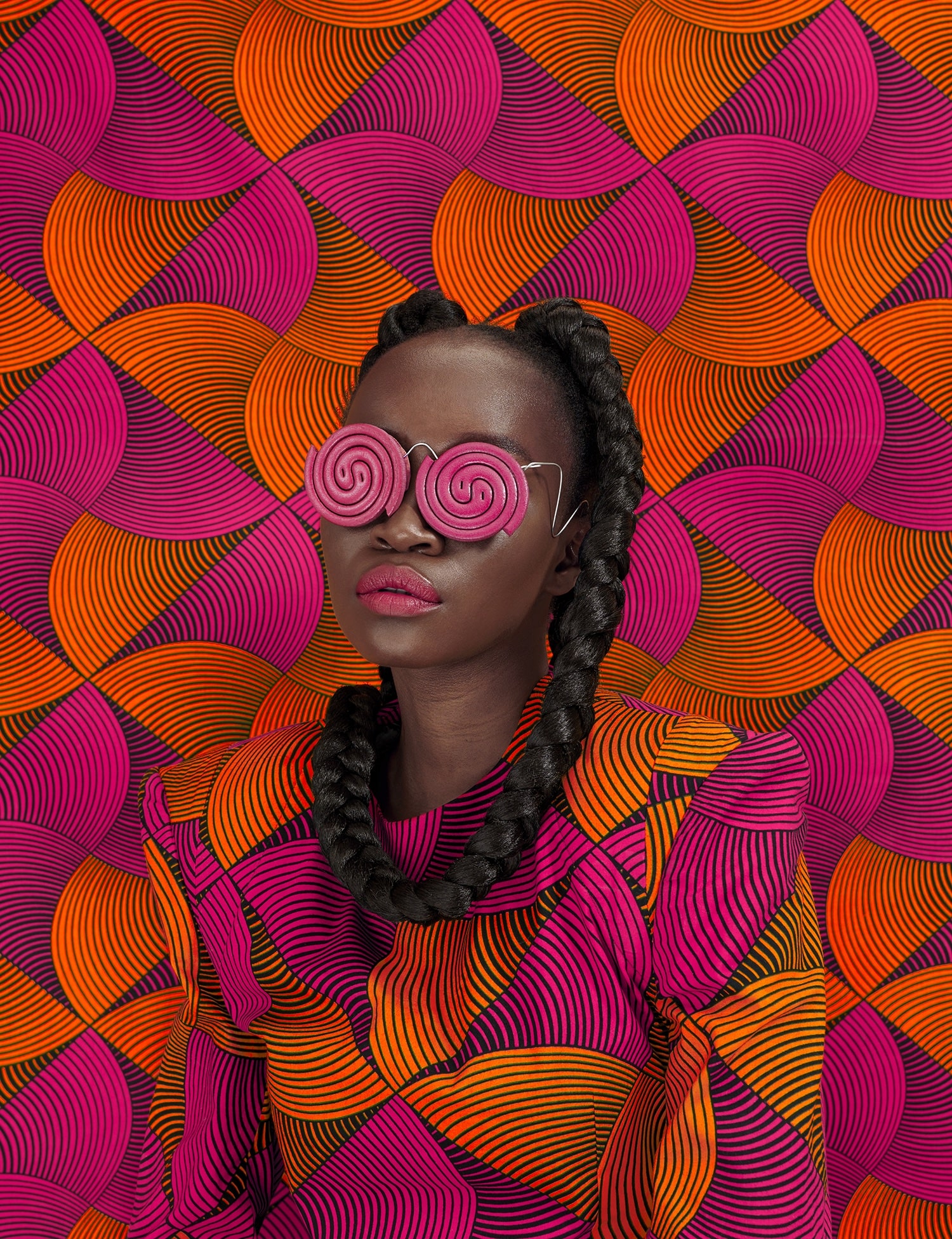
Thandiwe Muriu, “Camo 30,” © Thandiwe Muriu.
WW: Your models both blend into the background and stand out. Do you relate to that feeling?
TM: That is my reality. I grew up in a culture that told me you need to be this and that. In Kenya, when I began photography, it was a man’s job. I wore jeans to work; I carried heavy equipment. I realized I spent a lot of time apologizing, saying, “I’m sorry I’m not a doctor.” But I thought, “Hold on. I’m not sorry.” This is who I am. I can contribute to my culture even if it’s not in a conventional way. And you can see that in my work. The women in my images don’t smile. It’s not that they’re not friendly, but Kenyan women are strong. I tell my models, “You are a confident woman. You know what you are about. Put that in your head and let’s see what we come up with.”
WW: You’re currently working on a series that departs from your recognizable aesthetic. Why?
TM: I have been asking myself what else I want to say and explore. How else can I speak? Is it only print and color, or can I take those elements and infuse them into different messaging? I am exploring projects around that for a completely different series.
There is always the risk that I could create something I absolutely hate, but it is a part of the journey. It is figuring out, beyond this, how much more uncomfortable I can get. Now I know this is something I love, so it is a safe space. But it’s time to step out.
WW: Where can we see your works next?
TM: I will be in a group exhibition at SCOPE Miami Beach (November 29–December 4) and presenting a solo show at Zonamaco in Mexico City (February 8–12, 2023).
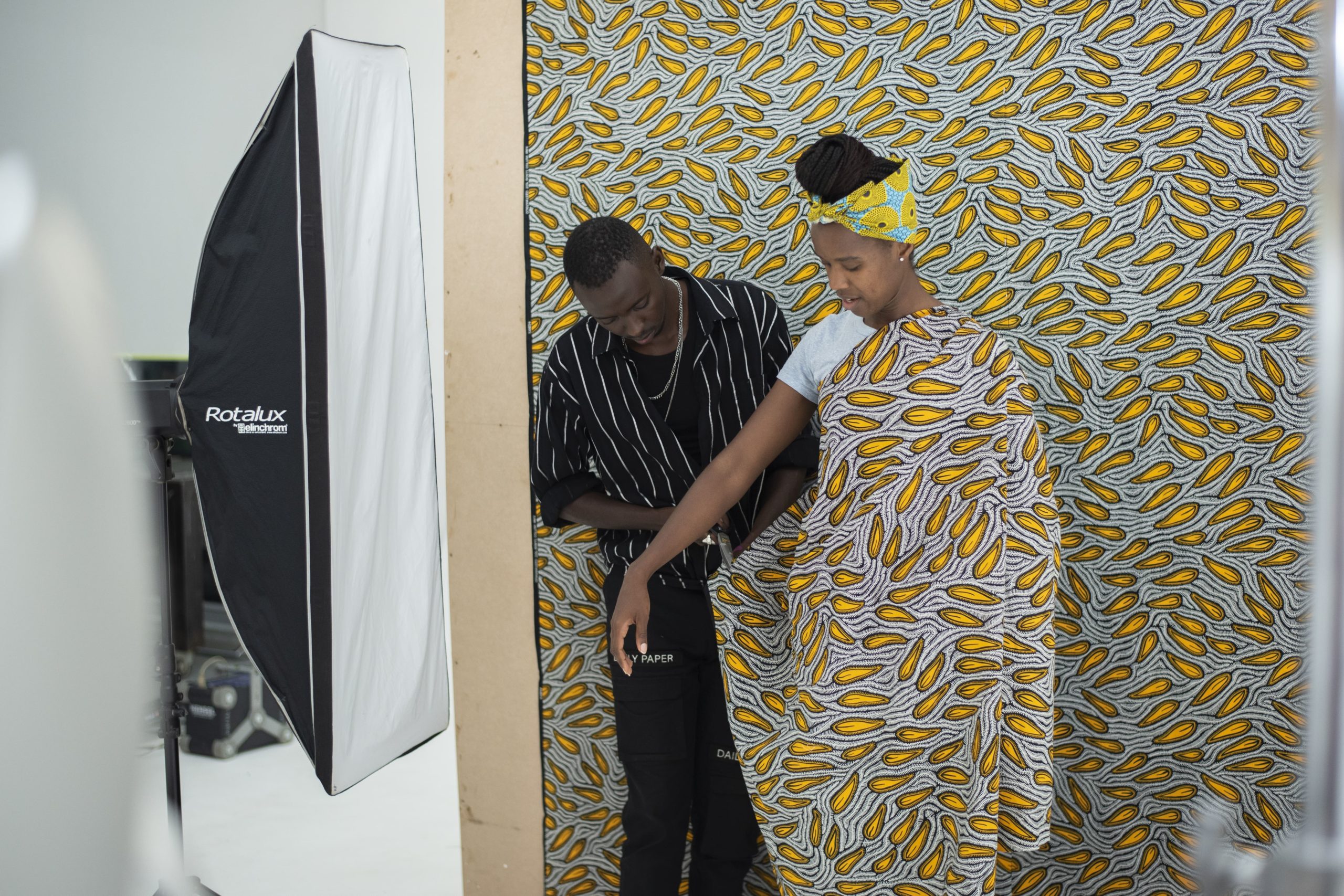
© Thandiwe Muriu.



